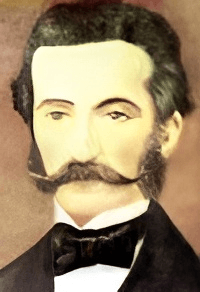Diego Vigil y Cocaña facts for kids
Quick facts for kids
Diego Vigil y Cocaña
|
|
|---|---|
 |
|
| Interim President of Federal Republic of Central America | |
| In office 1 February 1839 – 31 March 1840 |
|
| Preceded by | Francisco Morazán |
| Succeeded by | Office Abolished |
| 11th & 13th President of El Salvador | |
| In office 1 February 1836 – 23 May 1837 |
|
| Preceded by | Francisco Gómez |
| Succeeded by | Timoteo Menéndez |
| In office 7 June 1837 – 6 January 1838 |
|
| Preceded by | Timoteo Menéndez |
| Succeeded by | Timoteo Menéndez |
| 7th President of Honduras | |
| In office 30 June 1828 – 2 December 1829 |
|
| Preceded by | Francisco Morazán |
| Succeeded by | Francisco Morazán |
| Personal details | |
| Born | 1799 Tegucigalpa, Honduras |
| Died | 10 January 1845 Granada, Nicaragua |
| Political party | Liberal |
| Alma mater | University of León |
| Profession | politician |
Diego Vigil y Cocaña (born 1799 in Tegucigalpa, Honduras – died 1845 in Granada, Nicaragua) was an important politician in Central America. He was the last president of the Federal Republic of Central America, a group of countries that tried to work together. He also led the states of Honduras and El Salvador at different times.
Contents
Early Life and Political Start
Diego Vigil was born to José Vigil Fernández and Josefa Cocaña Fábrega. He was related to Francisco Morazán, a famous general and leader in Central America. Vigil was one of Morazán's closest friends and allies.
Vigil studied law at the University of León in León, Nicaragua. After finishing his studies, he worked as a lawyer in Tegucigalpa.
In 1824, he became a member of the federal parliament. This was like being a representative in the government. From 1826 to 1827, he served as the governor of the Tegucigalpa region. However, he was arrested when federal troops took over the city. He was freed when Morazán's forces took back control of Honduras.
Leading Honduras
After General Morazán won an important battle in 1827, Diego Vigil was chosen as the vice-leader of Honduras. Later, Morazán made him the chief of state (leader) of Honduras. He held this position from March 7, 1829, to December 2, 1829.
During his time as leader, the government made some big changes. They decided to close down religious communities. Their properties, like monasteries, then became public buildings for the state to use.
Leading El Salvador
General Morazán also appointed Diego Vigil as the chief of state for El Salvador. He served two terms: first from February 1, 1836, to May 23, 1837, and then again from July 7, 1837, to January 6, 1838.
During his leadership in El Salvador, a serious illness called cholera spread. It was brought by people returning from a religious trip. Because of the illness, the government stopped most payments. They wanted to use all their money to fight the disease. By early 1837, the illness had spread across the entire state. The government set up special health groups to help in different areas.
In March 1836, a former leader of El Salvador, Nicolás Espinoza, was removed from the state. He also lost an honor he had received.
In January 1837, the government approved its yearly budget, which was about 85,028 pesos. They also decided to bring water into the town of San Miguel.
In May 1837, there was an uprising in Zacatecoluca and Cojutepeque. This caused a lot of trouble. On the same day, Vigil's leadership role was taken over by Timoteo Menéndez. However, Vigil returned to office about six weeks later.
In June 1837, another movement started in Santa Ana. But the government was able to stop it. The government then offered forgiveness to those who had taken part in these movements.
On January 6, 1838, Timoteo Menéndez became the chief of state again.
President of the Federal Republic
Diego Vigil was chosen to become the vice president of the Federal Republic of Central America in February 1838. This happened after the previous vice president was killed. At this time, Morazán was serving his second term as president of the federation.
On February 1, 1839, Morazán handed the presidency over to Vigil. However, the Federal Republic was falling apart. Countries like Nicaragua, Honduras, and Costa Rica had already left in 1838. Soon after, Guatemala also left in April 1839. This meant that only El Salvador was left in the "federation."
On March 31, 1840, El Salvador officially left the federation. With this, Diego Vigil's time as president came to an end.
Later Life
On April 8, 1840, Diego Vigil and Francisco Morazán left El Salvador. They traveled to Costa Rica and Panama. After Morazán was executed in San José, Costa Rica in 1842, Vigil moved to Granada, Nicaragua. He lived there until he passed away in 1845.
See also
 In Spanish: Diego Vigil y Cocaña para niños
In Spanish: Diego Vigil y Cocaña para niños

